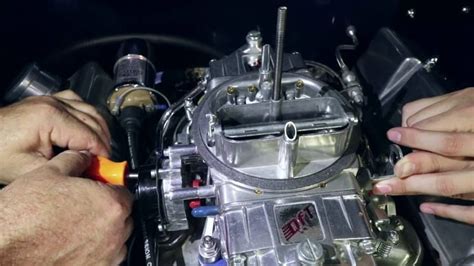Carburetor Choke Adjustment: Save Money on Gas
Modern fuel-injected vehicles have largely rendered carburetors obsolete, but for classic car owners and those working with older small engines (like lawnmowers), understanding carburetor choke adjustment is crucial for both performance and fuel efficiency. A properly adjusted choke ensures your engine starts easily and runs smoothly, preventing wasted fuel and unnecessary wear and tear. This guide will walk you through the process, helping you save money on gas while keeping your engine purring.
What is a Carburetor Choke?
The choke is a vital part of a carburetor. Its primary function is to enrich the air-fuel mixture when starting a cold engine. Cold engines require a richer mixture (more fuel, less air) to ignite and run until they reach operating temperature. The choke restricts the airflow into the carburetor, forcing the engine to use a higher concentration of fuel. Once the engine warms up, the choke is opened, allowing a normal air-fuel ratio for optimal combustion and fuel economy.
How Does a Choke Affect Gas Mileage?
An improperly adjusted choke directly impacts fuel efficiency.
-
Choke stuck closed: If the choke remains closed even after the engine warms up, the engine runs excessively rich, consuming far more fuel than necessary. This leads to poor performance, black smoke from the exhaust, and significantly reduced gas mileage.
-
Choke stuck open: Conversely, if the choke remains open when the engine is cold, the engine may struggle to start and run smoothly. It will likely sputter, stall, and consume more fuel attempting to compensate for the lean mixture.
-
Choke adjusted incorrectly: Even a slightly off adjustment can lead to suboptimal fuel consumption over time.
How to Adjust Your Carburetor Choke
The exact method for adjusting your choke depends on the type of choke mechanism (automatic or manual) and the carburetor's design. Always consult your engine's service manual for specific instructions and diagrams. However, here's a general overview:
Manual Choke Adjustment:
-
Locate the choke lever: This is usually a lever or knob on the carburetor or near the steering column (for older vehicles).
-
Start the engine cold: Observe how the engine runs with the choke fully engaged.
-
Gradually open the choke: As the engine warms up, slowly open the choke lever. Listen for changes in engine sound and smoothness. If the engine starts to sputter or stall, close the choke slightly.
-
Find the sweet spot: The ideal setting is where the engine runs smoothly and steadily without excessive smoke or hesitation. This is the point of optimal fuel efficiency for warm-up.
Automatic Choke Adjustment:
Automatic chokes are more complex and often require specialized tools and knowledge for adjustment. They typically use a bimetallic spring or a thermostat to control the choke plate. Improper adjustment can lead to problems similar to a manual choke. It's often best to consult a professional mechanic for automatic choke adjustments.
Troubleshooting Common Choke Problems
H2: My engine is hard to start even with the choke engaged.
This usually points to a problem beyond the choke itself. Possible causes include: old or fouled spark plugs, low fuel level, dirty air filter, carburetor needing cleaning or rebuilding, or even ignition system issues.
H2: My engine runs rough even after the choke is fully open.
This could indicate a problem with the carburetor's idle mixture adjustment or other carburetor components. It's usually necessary to have a qualified mechanic diagnose and repair the issue.
H2: How often should I adjust my carburetor choke?
Regular adjustment might not be necessary unless you notice performance issues or changes in fuel consumption. If your engine is running well, there is no need to frequently fiddle with the choke setting.
Conclusion:
Proper carburetor choke adjustment is key to optimal engine performance and fuel efficiency, especially in older vehicles and equipment. By understanding how the choke works and taking the time to make small adjustments, you can save money on gas and extend the life of your engine. If you're uncomfortable working on your carburetor, consult a qualified mechanic for assistance. Remember, a little preventative maintenance goes a long way.

